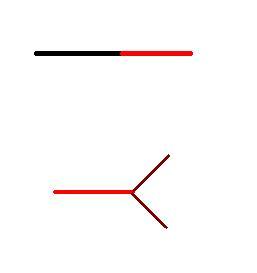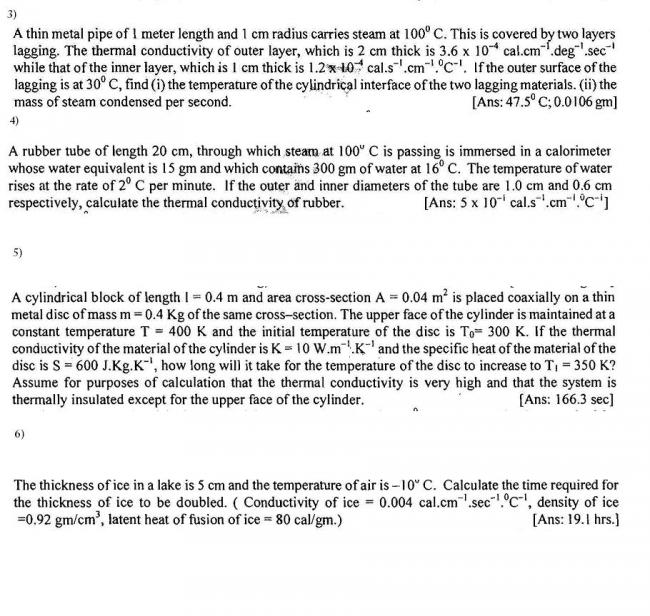2) 
10 Answers
i ll post sum mor ques 4rm heat transfer chapter in dis tread......plzzz help me out
One suggestion...
read the parallel and series equivalent of the conduction....
I will try to post something from there...
also I will try to solve some of these here...
First some theory which i copied from just now :D

In physics, thermal conductivity, k, is the property of a material that indicates its ability to conduct heat.
First, we define heat conduction by the formula:
H=\frac{\Delta Q}{\Delta t}=k\times A\times\frac{\Delta T}{x}
where \frac{\Delta Q}{\Delta t} is the rate of heat flow, k is the thermal conductivity, A is the total cross sectional area of conducting surface, ΔT is temperature difference and x is the thickness of conducting surface separating the 2 temperatures.
Thus, rearranging the equation gives thermal conductivity,
k=\frac{\Delta Q}{\Delta t}\times\frac{1}{A}\times\frac{x}{\Delta T}
(Note:\frac{\Delta T}{x} is the temperature gradient)
In other words, it is defined as the quantity of heat, ΔQ, transmitted during time Δt through a thickness x, in a direction normal to a surface of area A, due to a temperature difference ΔT, under steady state conditions and when the heat transfer is dependent only on the temperature gradient.
Things to keep in mind when solving this type of problems

1) if it is one rod after the other, then we have to say that the same hat flows through both.. just like current if one wire is joined to only one more.. or a pipe with only one new connection. In the first case, equal heat flows on both the sides of the joint
2) In the second case the heat coming till the red part is divided in 2 parts so keep in mind that you have to use this like
Q=Q1+Q2 and then solve.. just like in KCL!

